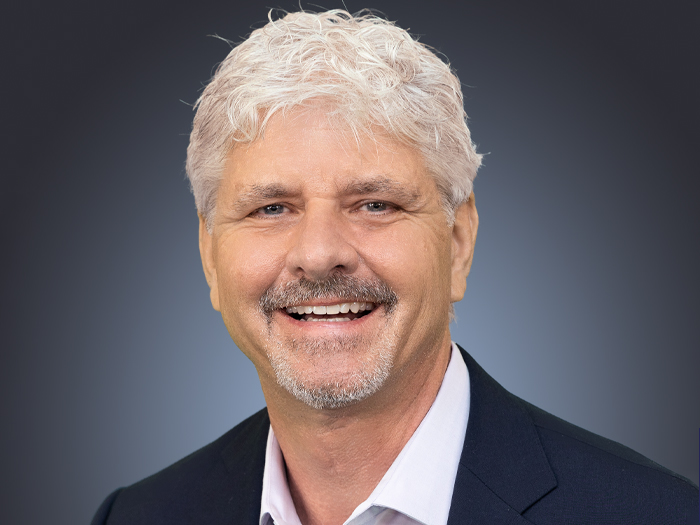2018 RIMS
5 Trends to Watch in Construction Technology

Construction is not the first industry to come to mind as a user of cutting edge technology, but that’s beginning to change. As in health care, manufacturing, transportation and many other sectors, new technologies are offering a way for contractors to do things safer and more efficiently while mitigating risk. Tom Grandmaison, EVP and Construction Industry Leader, AIG, sat down with Risk & Insurance at the annual RIMS conference and exhibition in San Antonio to discuss some of the most promising construction technologies on the horizon.
1. Wearables
Perhaps the most common form of modern technology appearing on job sites, wearable trackers are meant to improve worker safety and reduce workers’ compensation costs. They can alert supervisors when a worker is injured, getting help to them more quickly, but they also perform ergonomic functions like monitoring body position while lifting, reaching, bending and twisting.
“Sprains and strains are a big driver of workers’ comp claims and costs,” Grandmaison said.
Some wearable devices can track heart rate and body temperature to indicate when a worker is overheating. Others measure elevation – data that may come into play during investigation of a fall. Still others, like goggles, can record visual data and transmit it to a site supervisor or project manager on the ground, making it easier to communicate should a problem arise.
“There’s an emerging industrial wearables sector, with about 10-15 vendors out there bringing these products to market,” Grandmaison said
2. Building Sensors
Property sensors can help avoid costly losses caused by water infiltration.
“There’s a variety of different industrial sensors available, but the area we’re focused on is environmental sensors – things that track water, moisture and temperature,” Grandmaison said. “We had a number of claims in recent years where projects in either very hot or very cold areas were nearly complete, and then a pipe burst. When water seeps out unabated, it causes massive problems.”
Building sensors that monitor temperature fluctuations or the presence of moisture can alert safety supervisors, security, or project owners and managers when conditions go awry. Stopping a leak early can save thousands in materials and labor costs.
“Sensors are generally inexpensive, and there’s great value there to prevent major losses,” Grandmaison said.
3. Radio Frequency Identification
The physical challenge of moving workers around on a job site introduces inefficiency.
“One thing we hear frequently, on bigger sites in congested city areas, is that getting workers on the lifts to get them up to the floors they’re supposed to work on – is often very difficult. It can take 45 minutes to get some of the workers to the top floor of a building,” Grandmaison said.
Radio frequency identification (RFID) technology allows contractors to map worker movement, observing where people are working and for how long. This enables them to better plan project sequences to minimize time wasted getting from one area to another, or devise ways to better transport workers around the job site.
4. Virtual Reality
Virtual reality training modules give workers a taste of the hazardous conditions they’ll encounter on-site without putting them in harm’s way. One such module has trainees practice walking and performing tasks on steel beams hundreds of feet in the air. Perhaps no substitute for the real thing, but certainly a way to introduce new workers to a dangerous environment.
“It creates a realistic scenario for the worker and allows us to help train them in a completely safe environment,” Grandmaison said.
5. 3D Laser Scanning
Also known as LIDAR, 3D laser scanners use millions of beams of light to create three-dimensional blueprints of a finished room, measuring distances down to the millimeter. Contactors can compare these measurement to the original design to determine if the finished product was built exactly as intended.
“This allows for determination of the one truth, if you will. Contractors are leveraging this in a few different ways to minimize liability risk,” Grandmaison said. “The technology helps contractor’s document major milestones during the course of the construction.”
Construction defect claims have long tails and are a costly element of general liability risk, for which the best mitigation is thorough and detailed documentation. 3D scans provide a precise picture of completed work and can serve as a vital defense should a defect claim arise. Scans can also be taken at various stages throughout a project, documenting each major milestone, such as when the steel is erected, the floors are poured, or the roof is installed.
In instances when a project gets scuttled and a contractor replaced, these milestone scans mean builders have record of the work they completed before another contractor takes over. It could protect them from being blamed for another’s mistake if something goes wrong down the line, and helps them avoid unnecessary litigation.
We want the people we’re insuring to be safe and to build quality product, if we can help our customers lower their premiums, it’s a win-win.
Cost remains a barrier in implementing these technologies, and most are used primarily by larger contractors, but Grandmaison said the interest is there to make these tools more accessible. The entrance of younger workers could help drive the trend, and they tend to be more comfortable with technology and more open to being tracked on the job.
In addition to privacy concerns, these technologies also come with cyber, product defect and user error risks. But when used correctly, they can help shift contractors’ risk profiles for the better – something than benefits insureds and insurers alike.
“I envision a future where hopefully the use of these emerging technologies can bend the loss curve by multiples. We want the people we’re insuring to be safe and to build quality product, if we can help our customers lower their premiums, it’s a win-win,” Grandmaison said. “If we leverage these technologies correctly, it should deliver value for everyone.” &











